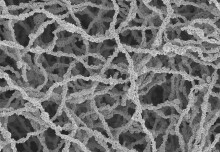Ryan Clark, a visiting researcher at Imperial College from the University of Regina in Canada has been investigating emission reduction
Capturing greenhouse gas emissions and injecting carbon dioxide (CO2) underground along with the increased use of renewables (such as biogas) all have the potential to reduce emissions while meeting our energy needs.
Based in the department of Chemical Engineering for six months, Ryan is working with Dr. Sara Budinis at the Sustainable Gas Institute on his master’s project.
Ryan’s research focused on evaluating the opportunities for transitioning and expanding the use of clean energy technology in Saskatchewan and Canada over the next 50 years and beyond.
We caught up with Ryan last month before he left to find out about his work.
Could you tell us a little bit more about your research?
We have been analysing a large-scale power production facility and looking at how we can reduce emissions through the use of biogas and Carbon Capture & Storage (CCS) technology.
Our study involved identifying nine different clean energy technologies (or combinations) and through computer modelling quantifying their potential impacts on the environment.
We did this by examining the differences in amount of carbon dioxide (CO2) emissions released into the atmosphere.
The model was then tested using real-life data from a working conventional power plant, the Boundary Dam Power Station (Canada), which generates energy from burning coal.
We used data from the company, Sask Power that run the facility.
So how does the model work?
The computer model works by calculating and comparing CO2 emission for the different technological scenarios against the current environmental impacts from Boundary Dam.
For example, it shows what is likely to happens if natural gas (a less carbon intense process and a transitional fuel) were to replace coal.
Or what the impacts would be on emissions if additional clean energy technologies are used in combination with natural gas such as if waste CO2 were to be captured and trapped and stored underground.
The model also tests what would happen to emissions if natural gas was blended with renewable energy sources such as biogas.
Ultimately, the model estimates the total amount of CO2 released into the atmosphere for each technology (or combination of technologies) and ranks them. Those technologies that reduce the amount of CO2 are selected as the preferred option by the model.
So what were your results?
The results of our study show that the best scenario includes a combination of these technologies and could reduce CO2 emissions by as much as 60%. This is on a 35-years long projection time-frame.
I am delighted to say that our paper has been accepted for a presentation at the ESCAPE 27 Conference, which will take place in October in Barcelona.
The paper will also be published by Elsevier in a new volume of the Computer Aided Chemical Engineering book series.
Article text (excluding photos or graphics) © Imperial College London.
Photos and graphics subject to third party copyright used with permission or © Imperial College London.
Reporter

Zara Qadir
Department of Earth Science & Engineering

Contact details
Email: press.office@imperial.ac.uk
Show all stories by this author




